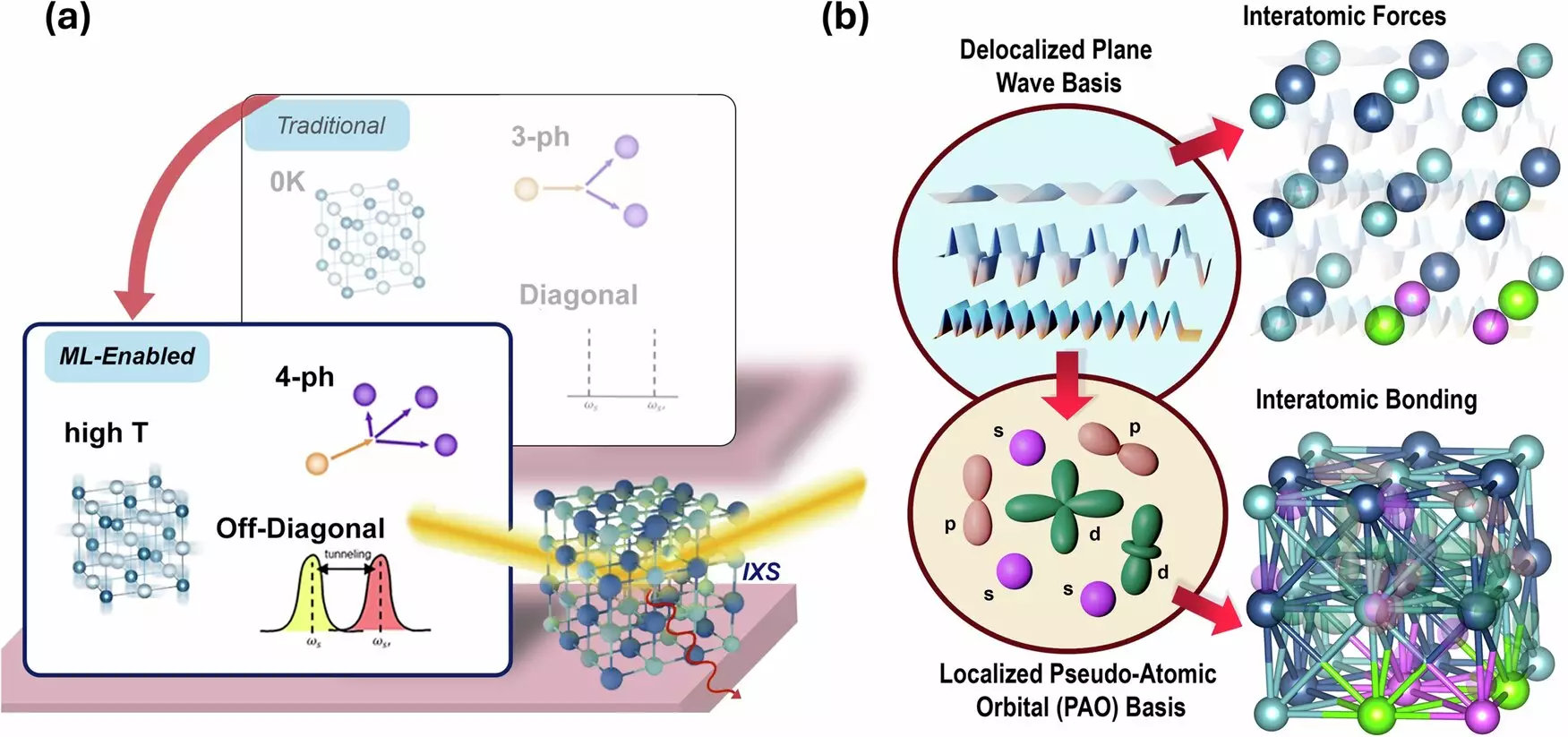Recent advances in material science highlight the significant potential of machine learning and X-ray technologies in elucidating the complexities of phase-change materials (PCMs). Researchers at Cornell University have made strides in demystifying the intricate thermal behaviors exhibited by germanium telluride (GeTe), a promising candidate for thermoelectric applications. While the cubic phase of GeTe has long posed questions due to its unexpected increase in lattice thermal conductivity with rising temperature, the Cornell team’s findings provide clarity and open avenues for further exploration in energy conversion technologies.
For years, researchers have noted that the thermal conductivity of GeTe exhibits a peculiar increase as the temperature escalates. However, understanding the underlying reasons for this phenomenon has remained challenging. Zhiting Tian, an associate professor at the Sibley School of Mechanical and Aerospace Engineering, spearheaded a study detailed in *Nature Communications*, shedding light on the correlation between temperature and bond strength within GeTe. By employing a combination of machine learning, first-principles calculations, and X-ray scattering measurements, the team successfully established a relationship that clarifies GeTe’s unexpected behavior.
The primary finding of the research indicates that as GeTe undergoes a phase transformation from a rhombohedral to a cubic structure upon heating, the strength of atomic bonds, particularly between second-nearest neighbors (Ge-Ge and Te-Te), significantly increases. Specifically, the study noted an 8.3% enhancement in Ge-Ge bond strength and an astonishing 103% increase in Te-Te bonding as the temperature surged from 693 K to 850 K. This revelation underscores the critical role these second-nearest neighbor bonds play in the material’s thermal conductivity, elucidating why GeTe behaves unexpectedly under thermal stress.
The research team’s success was in large part due to their innovative approach, which involved leveraging machine learning to streamline the computational analysis of temperature effects and high-order scattering processes. Such methods allowed for the simultaneous consideration of various influential factors such as temperature dependence, four-phonon scattering, and coherence contributions, which are integral to understanding thermal transport phenomena. Tian pointed out that this computational efficiency was pivotal in achieving accurate modeling of GeTe’s behavior, a feat that traditional methods found difficult due to their prohibitive nature.
Phase-change materials like GeTe hold significant promise for a range of applications in electronics and optics due to their ability to rapidly change properties between different stable phases. With GeTe identified as a potential alternative to the toxic semiconductor lead telluride in thermoelectric applications, this research could have far-reaching implications for sustainable energy solutions. Tian and her team not only elucidated the behavior of GeTe but also identified other promising materials like tin-telluride and tin-selenide, thereby expanding the horizon for future materials research.
The findings from Cornell University offer a robust framework for understanding thermal behavior in materials near phase transitions and at high temperatures. By establishing a pathway for accurate modeling of PCMs and their properties, this research sets a foundation for subsequent explorations in energy technologies. Researchers can now delve deeper into other classes of materials exhibiting comparable thermal behaviors, empowering future innovations in energy conversion and sustainability.
The collaborative efforts of Tian and her research team exemplify how interdisciplinary approaches combining advanced computational methods and experimental techniques can solve complex scientific puzzles. As the quest for efficient thermoelectric materials continues, studies such as this one will undoubtedly play a crucial role in deciphering the thermal dynamics of phase-change materials, paving the way for next-generation sustainable technologies.


Leave a Reply